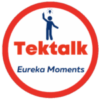
Writing a Project Charter
Writing a Project Charter
What is a project charter?
Project Charter Meaning “A project charter is a formal document that provides an official and authorized mandate for a project“.
It is typically created at the initiation phase of a project and serves as a crucial reference point throughout the project’s lifecycle. The project manager is the owner of the Project Charter and constantly uses it as a guideline to steer the project. The project charter outlines the project’s objectives, scope, stakeholders, roles and responsibilities, and other essential information. Let us look into creating a good project charter and what all you need to consider when writing.
A project charter plays a critical role in setting clear expectations, aligning stakeholders, and providing a formal framework for project management. It is a reference point that helps ensure that the project stays on track and meets its defined objectives and requirements. A project charter plays a critical role in setting clear expectations, aligning stakeholders, and providing a formal framework for project management. It is a reference point that helps ensure that the project stays on track and meets its defined objectives and requirements.
What is the role of Project Charter in Project Management?
The project charter is a critical document in project management that serves as the foundation for the project. It formally authorizes the project, providing the project manager with the authority to allocate resources and make decisions. The charter outlines the project’s objectives, scope, key stakeholders, major deliverables, and high-level timeline. It also identifies potential risks and assumptions. By establishing clear goals and defining roles and responsibilities, the project charter helps ensure alignment among stakeholders and sets the stage for successful project execution.
What are the Project Charter Elements?
The project charter has the following major elements:
Title: A clear and concise name for the project.
Project Manager: The name of the person responsible for leading and managing the project.
Start and End Dates: The planned dates for when the project will commence and conclude.
Objectives: A statement of what the project aims to achieve, including its primary goals and any secondary objectives.
Project Scope: A description of the project’s boundaries, including what is included and what is excluded from the project.
Stakeholders: Identification of key individuals and groups with an interest in the project, including the project sponsor and primary stakeholders.
Team: A list of team members and their roles and responsibilities in the project.
Project Risks: Identification of potential risks and uncertainties associated with the project, along with proposed mitigation strategies.
Schedule: A high-level timeline outlining important project milestones and deadlines.
Budget: Details about the project budget, including allocated funds and any financial constraints.
Quality Standards: Description of the quality standards or benchmarks that the project will adhere to.
Communication Plan: An outline of how project communication will be managed, including reporting, meetings, and stakeholders’ involvement.
Approval: The names of the individuals who authorize the project and the date of approval.
Let us look into some of these components in detail. You can write your own for the rest of them as they are quite simple.
Project Title
The project title is a fundamental component of the project charter that not only provides clarity and focus but also plays a significant role in project communication, alignment, and recognition. It sets the stage for the entire project and helps ensure that all stakeholders have a common understanding of its purpose and goals.
Here are some examples that showcase how a good project title can be written. Be innovative and write your own!
Streamlining Customer Onboarding for Increased Satisfaction – Implementing a Cost-Effective Inventory Management System – Launching a Market-Disrupting Product Innovation – Enhancing Employee Training and Development Programs – Optimizing Supply Chain Efficiency for Competitive Advantage – Building a Sustainable Green Energy Infrastructure – Improving Healthcare Access in Underserved Communities – Digital Transformation for Enhanced Customer Engagement – Expanding Market Reach through E-commerce Integration
Project Objectives
Project objectives, as outlined in a project charter, serve as the foundation upon which the entire project is built. These objectives are precise, measurable, and time-bound statements that define what the project aims to achieve. Many of these project objectives are tracked as part of the project planning process and is maintained by the project manager. They provide a clear and unambiguous roadmap for the project team and stakeholders, ensuring everyone is aligned with the project’s purpose. In the project charter, these objectives are typically linked to the organization’s broader strategic goals, emphasizing the project’s contribution to the overall success of the company. These objectives are essential for guiding decision-making, resource allocation, and project management throughout the project’s lifecycle.
Moreover, project objectives play a pivotal role in maintaining project focus and ensuring that efforts are not diverted to non-essential tasks. They enable project managers to track progress, measure success, and evaluate whether the project has met its intended outcomes. As such, project objectives are not only vital for the successful execution of the project but also for facilitating accountability, as they provide a basis for assessing performance and determining whether the project has delivered the expected value and benefits.
Project Risks
Project charters typically include an assessment of project risks as they are a critical component of effective project management. The project manager highlights and manages these risks. These identified risks represent potential challenges or uncertainties that can impact the project’s success. Project risks often vary depending on the nature of the project, but some common categories include technical risks, operational risks, market risks, financial risks, and external risks. For instance, technical risks may involve concerns about the project’s complexity or the use of unfamiliar technologies, while market risks could pertain to changes in customer demand or shifts in industry trends. By documenting these risks in the project charter, the project team and stakeholders are alerted to potential obstacles, enabling them to prepare mitigation strategies and contingency plans.
Throughout the project lifecycle, it’s essential for the project manager to continuously monitor and manage these identified risks. This involves periodically assessing their likelihood and impact, implementing risk mitigation measures, and adapting the project plan as needed to address emerging risks. The project charter is a part of project planning and serves as a reference point to guide risk management efforts. This helps ensure that the project team remains vigilant and proactive in mitigating and addressing risks. By systematically addressing these potential challenges, project managers and teams can enhance the project’s resilience and increase the likelihood of successful outcomes, ultimately delivering on the project’s objectives.
Examples of risks
Here are a few examples of risks you may want to mention in a project charter
- Technical Risks: These could involve challenges related to unfamiliar technologies, integration issues, or the potential for unexpected technical issues that may impede project progress.
- Resource Constraints: This risk encompasses the potential for insufficient resources, such as budget constraints, limited manpower, or unavailable equipment, which could lead to delays or compromised project quality.
- Scope Creep: The risk of scope creep refers to uncontrolled changes or additions to the project scope, which can lead to increased costs, schedule overruns, and potential loss of focus on the project’s primary objectives.
- Market Fluctuations: Changes in market conditions, customer demand, or industry trends may pose risks, affecting the project’s success, especially if these fluctuations impact the project’s business case or expected outcomes.
- Regulatory and Compliance Risks: Projects in regulated industries or those subject to specific legal requirements may face risks associated with changes in regulations or non-compliance, leading to potential legal and financial repercussions.
Including these risks in the project charter helps ensure that they are acknowledged and understood by the project stakeholders and team, and that plans are in place to address them proactively.
Project Charter vs. Project Plan
-
Project charter
-
Project planA project plan is an in-depth document that expands on the project charter, offering a detailed blueprint of the project’s essential elements. It describes how the project will be executed, monitored, and controlled, including specifics on activities, timelines, resources, and strategies to achieve the project’s objectives. The project plan covers seven key components: goals, success metrics, stakeholders and roles, scope and budget, milestones and deliverables, timeline and schedule, and communication plan.
Project Charters are fairly detailed documents and you need to write one based on the project you are working on and your organizational goals. If you need help in writing a professional Project Charter contact us and we can write one for you.
Here is a example of how to write a Project Charter. You may use this as a guide to describe an over all project charter outline.
Project Charter Example
Example Project Charter: “XYZ Company Website Redesign Project”
Project Title: XYZ Company Website Redesign
Project Sponsor: John Doe, Chief Marketing Officer
Project Manager: Jane Smith, Senior Project Manager
Date: August 24, 2024
1. Project Purpose and Justification
The XYZ Company Website Redesign Project aims to overhaul the company’s current website to enhance user experience, improve site navigation, and ensure the site is mobile-responsive. The existing website has become outdated, leading to a decline in user engagement and an increase in bounce rates. The redesign is necessary to align the website with current industry standards, meet user expectations, and support the company’s growth objectives by providing a platform that is both user-friendly and reflective of the brand’s values.
The redesigned website will enable XYZ Company to:
- Increase customer engagement and retention.
- Improve the user interface (UI) and user experience (UX).
- Enhance mobile accessibility.
- Support marketing and sales efforts by integrating new tools for lead generation.
- Reflect the company’s evolving brand identity.
2. Project Objectives
- Enhance User Experience: Simplify site navigation and reduce the bounce rate by 20% within the first six months post-launch.
- Improve Mobile Accessibility: Ensure the new website is fully responsive across all devices, achieving a Google Mobile-Friendly Test score of 95 or above.
- Increase Conversion Rates: Implement design changes and new features aimed at increasing the website’s conversion rate by 15% within six months.
- SEO Optimization: Optimize on-page SEO elements to improve search engine ranking, targeting a 25% increase in organic traffic within three months.
- Content Management System (CMS) Upgrade: Migrate the website to a modern CMS that allows for easier content updates and scalability.
3. Project Scope
In-Scope:
- Redesign of the entire XYZ Company website, including the homepage, product pages, blog, and contact forms.
- Development of a new, responsive website design.
- Migration of existing content to a new CMS.
- SEO optimization of all web pages.
- Integration of new marketing tools such as email capture forms, analytics tracking, and A/B testing capabilities.
- Usability testing and user feedback incorporation before the final launch.
- Staff training on the new CMS.
Out-of-Scope:
- Development of new content or copywriting services.
- Creation of custom plugins or applications not specified in the original requirements.
- Extensive modifications to the company’s existing branding elements outside the website redesign.
4. High-Level Requirements
The website must be fully responsive and accessible on all major devices (desktop, tablet, mobile).- The design must align with the XYZ Company’s brand guidelines.
- The site must include integrated analytics tools to track user behavior and engagement.
- The website must have an easy-to-use CMS for ongoing content management by non-technical staff.
- Security features must be implemented to protect user data and comply with GDPR regulations.
5. Milestones
| Project Kickoff | September 1, 2024 |
| Wireframe and Design Mockups | September 15, 2024 |
| Development Start | October 1, 2024 |
| Beta Testing | November 15, 2024 |
| Final Testing and Quality Assurance | December 1, 2024 |
| Launch | December 15, 2024 |
| Post-Launch Review | January 15, 2025 |
6. Budget Estimate
- Design Phase: $20,000
- Development Phase: $50,000
- Testing Phase: $10,000
- Content Migration: $5,000
- Contingency (10%): $8,500
- Total Budget: $93,500
7. Project Risks
- Risk: Delays in approval of design mockups could push the project timeline. Mitigation: Set clear deadlines for feedback and approvals from stakeholders.
- Risk: Potential issues during content migration leading to data loss. Mitigation: Conduct thorough backups and test the migration process on a staging site.
- Risk: Overruns in development time due to unforeseen technical challenges. Mitigation: Allocate buffer time within the project schedule and have a contingency plan.
8. Project Assumptions
- Necessary resources (designers, developers, testers) will be available as planned.
- Stakeholders will provide timely feedback and approvals.
- All third-party tools and plugins required will be compatible with the new website CMS.
- The budget will be approved and available before the project start date.
9. Project Constraints
- The project must be completed within the four-month timeframe.
- The budget for the project is capped at $93,500.
- The website must be launched before the end of 2024 to align with the company’s marketing campaign schedule.
10. Project Stakeholders
- Project Sponsor: John Doe, Chief Marketing Officer
- Project Manager: Jane Smith, Senior Project Manager
- Design Team: Led by Sarah Lee, Creative Director
- Development Team: Led by Mark Roberts, Lead Developer
- Marketing Team: Led by Emily Davis, Marketing Manager
- IT Support: Led by Tom Harris, IT Director
- Content Team: Led by Rachel Green, Content Manager
11. Approval and Sign-Off
Project Sponsor:
Name: John Doe
Signature: ____________________
Date: ____________________
Project Manager:
Name: Jane Smith
Signature: ____________________
Date: ____________________
You may alter it and format it to your specific needs but this is the general outline of any project charter.
All rights reserved – Vijay Chander 2023 – Tektalk



